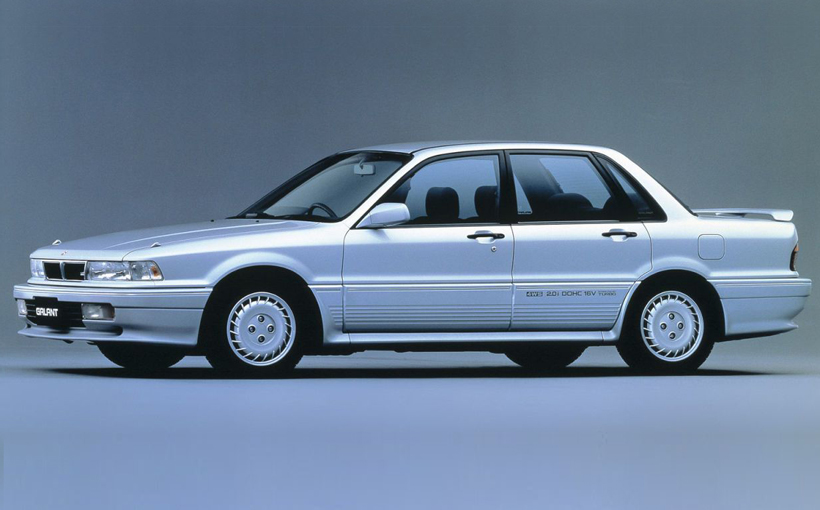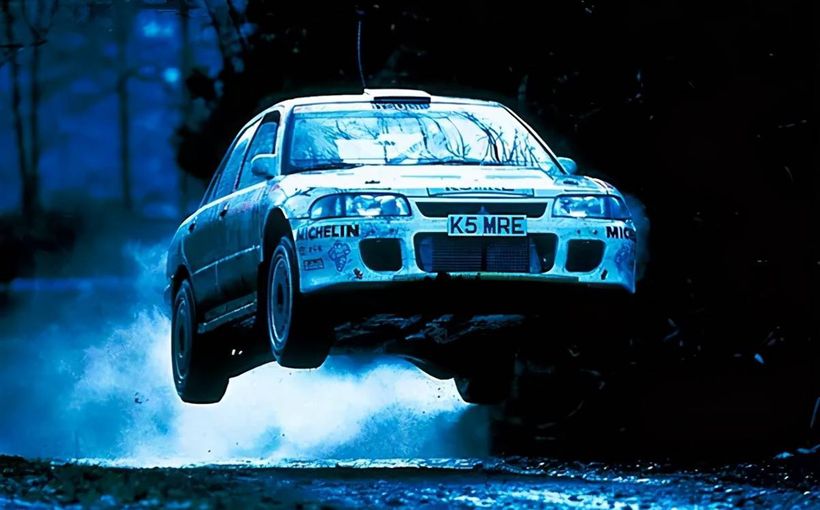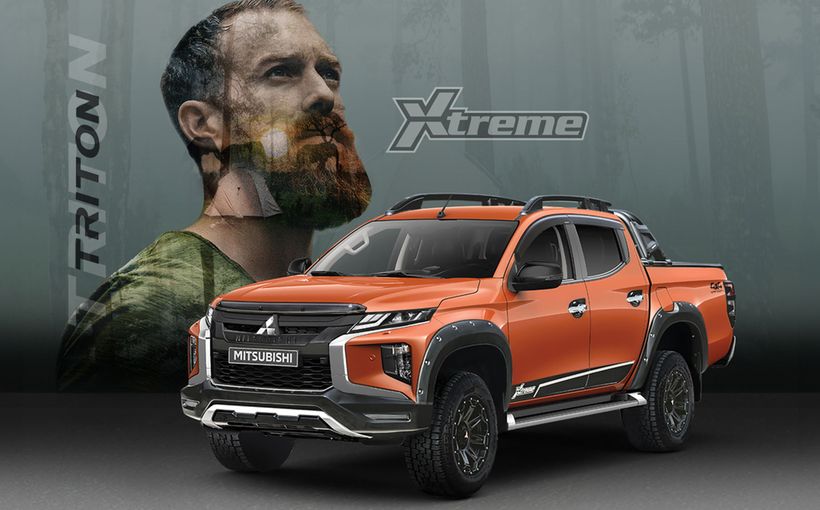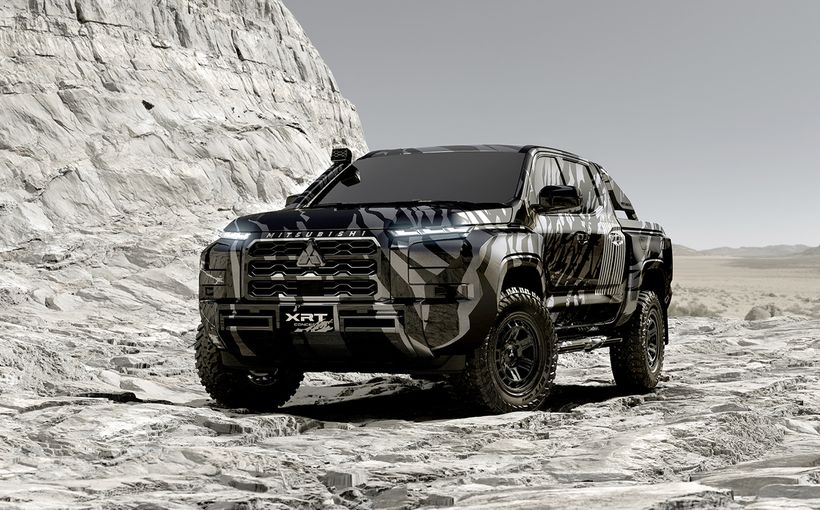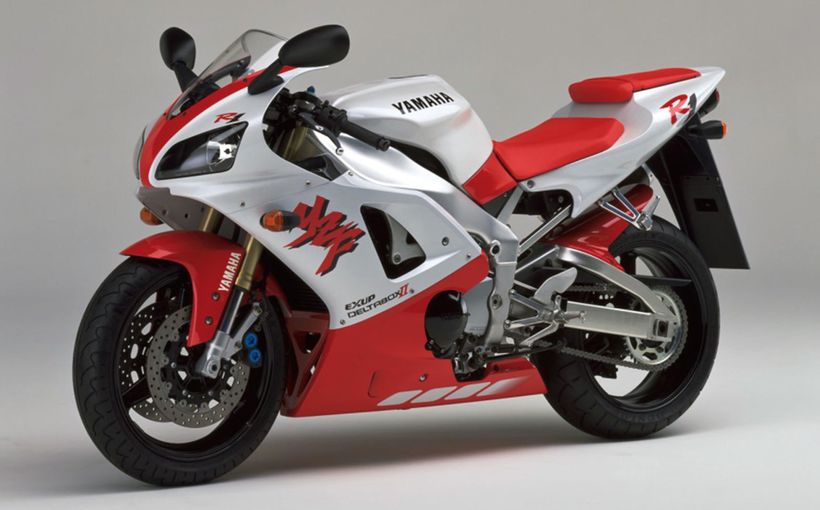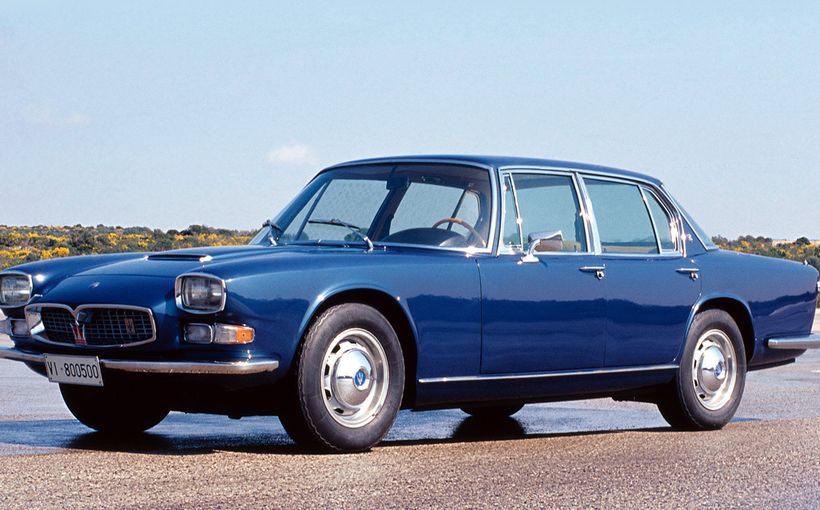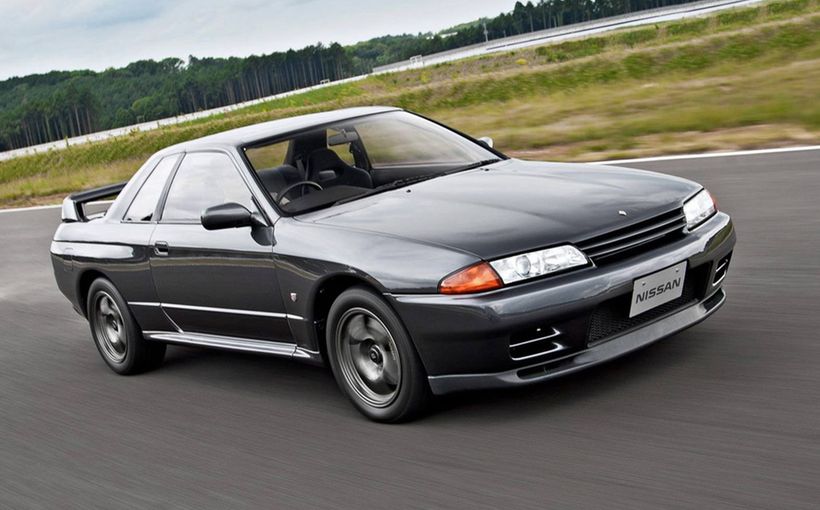Mitsubishi Galant VR-4: charming and original Japanese super sedan

The second half of the 1980s was a time of considerable technical advancement in the automotive industry, especially in Japan. Both the Mazda MX-6 and the Honda Prelude featured four-wheel steering (4WS), and it seemed highly likely that within a very few years most cars would adopt this technology. At the time, 4WS probably seemed more likely to go from being a fad to a lasting movement than the very expensive and heavy four-wheel-drive – still yet to be bifurcated into 4WD and all-wheel-drive (AWD), by Fuji Heavy Industries’ (read: Subaru’s) canny product planners.

One new Japanese car, which made its debut in 1987, featured both 4WS and 4WD and this was the Mitsubishi Galant VR-4. The VR-4 (for Viscous Realtime 4WD) was the flagship of the company’s sixth generation Galant. The VR-4 had been configured to meet the then new Group A regulations of the World Rally Championship (WRC).
In one respect, the Galant VR-4 came into being as a kind of default position for Mitsubishi’s approach to the highest level of rallying. The company had intended to enter a 4WD version of its Starion sports car in Group B, but following fatal accidents in 1985-86, this formula – in which the Audi Quattro and latterly the Peugeot 205T16 had been star cars – was abandoned in favour of Group A, which became the standard WRC formula from 1987 to 1997.
Of course, the car that rewrote the WRC record books, the Audi Quattro, had been the first mainstream performance car to use 4WD; I say ‘mainstream’ because the first was the 1967 Jensen FF (for Ferguson Formula), a genius car that was physically similar to the Interceptor but almost immeasurably superior.
Once Audi had proved it could be done, numerous other inevitably followed.
The Galant was homologated using the mechanical componentry of the planned Starion 4WD.

Like most cars, the Galant had grown in size with the years and the VR-4 was significantly longer and heavier than the model to which Australians had grown accustomed to in the 1970s. This meant that the newly homologated Mitsubishi rally weapon could not use its rumoured up-to-410 bhp in Group A guise to maximum effect because it was as much as 100kg heavier than most of its rivals.
As a road car though, the VR-4 was amazing.

The VR-4 was imported into Australia from mid-1990 (the national media launch was in June or July – Wheels published its initial drive in the September edition) with Mitsubishi Motors Australia Limited (MMAL) expecting to sell about 40 per month. But this was such a niche vehicle and, frankly, so expensive for any Mitsubishi, that even this number proved difficult to sell.
The Galant VR-4 joined the SE sedan and hatch and GSR hatch variants, which had been on sale here since late 1989. With the Japanese yen riding high, these cars were quite pricey and the entry level for the Galant was $24,891. By contrast, buyers could opt for the excellent (albeit underpowered with the standard 2.6-litre engine) Magna Elante sports sedan for $23,682.
At the time, the VR-4 seemed to be an extraordinary vehicle. I remember thinking it was unlike any other car I had driven. Remember, this was at a time when the Ford Falcon had only just acquired a four-speed automatic transmission and the Holden Commodore used a pushrod American V6.
The first surprise was that, for all its battle kit – including a list of technical credentials literally spelt out beneath the protector strip on the rear doors: ‘4WS 2.0i DOHC 16V INTERCOOLER TURBO’ – the hotshot Galant did not feel as accelerative as its demeanour had led me to expect. Zero to 100km/h took 7.6 seconds which, frankly, was not that much quicker than a manual 3.9-litre Multipoint-injected EA Falcon.
The second was that its 4WS system did not endow it with particularly sharp turn-in. The VR-4 differed from both the Mazda MX-6 and the Honda Prelude 4WS in that the real wheels were not turned in the opposite direction to the fronts at low speeds to aid manoeuvrability; they turned only – and the rears just minimally, of course – in the same direction in the interest of brilliant high speed handling.
Build quality was superb.

About a year after its Australian debut, the Galant VR-4 faced a direct challenge from Subaru’s Liberty RS Turbo. Just like Mitsubishi, Subaru was looking for success in the WRC to showcase its performance car credentials. Interestingly, by the time these two technologically advanced sedans reached local showrooms, the product planners at both companies already knew that the Galant and Liberty were somewhat too large and unwieldy to carry the future of WRC on the so-tight roads which were the mainstream of the series; both were planning to downside, into the Lancer and Impreza respectively; Toyota would also shift from Celica to Corolla.
What this meant was that the Galant VR-4 and Liberty RS Turbo were high performance rally and road cars that defined quite a narrow window of the very late 1980s and very early 1990s. Not only that, but 4WS (which the Subaru didn’t have) would have proven (perhaps unfortunately) to be a fad, while 4WD – soon redefined as AWD – would be (along with forced induction) one of the defining characteristics of compact Japanese performance models.
Undeniably, the Galant VR-4 now seems to exude a period quaintness. The Wheels journalist who attended the national media launch wrote:
First impression: the VR-4 looks about as menacing as Gomer Pyle, despite the front air dam, rehashed grille, subtle rear lid spoiler and attractive alloy wheels. It can’t shake off its origins, although the hot Galant does grow more aesthetically comfortable with driving distance.
It was surprising in such a sports-focused machine that the ride comfort was good:
The compromise between ride and lurchless handling is admirable.
Sizable potholes are simply obliterated whether the car’s travelling at maximum warp or kerb crawl, and this adds to the aura of integrity and security.
Early in 1990, the Toyota Celica GT-Four became the first four-wheel-drive performance car to be offered for sale in Australia. Its price without options was $42,910. But it was soon joined by the bargain basement Ford Laser TX3 Turbo 4WD. Subaru had its naturally aspirated Liberty Constant 4WD (with the RS Turbo to follow in 1991).

Toyota, like Mitsubishi and Subaru, had its focus on the WRC. But the GT-Four, good as it was, could not compete on equal terms with the more advanced Galant VR-4. I mentioned a window of time earlier in this story: it’s fair to say that, in the year of its launch, the VR-4 was the most advanced car produced by the Japanese automotive industry; in my view it was out-teched only by the fearsome Audi Quattro (now known as the ‘ur-Quattro’, meaning original).
The VR-4 even had double wishbone independent rear suspension, which was quite remarkable given the Galant’s basic front-wheel-drive beginnings.
But weight is always the enemy of performance and the VR-4 hit the weighbridge at a meaty 1470kg. With 148kW, it was close to what was once a magic formula of 10kg/kW, a figure matched by the 1989 Citroën BX 16-Valve. Given this power to weight ratio and the difficulty of launching all-wheel-drive cars in acceleration tests, the Mitsubishi didn’t do too badly in reaching 100km/h in less than eight seconds. And its standing 400 metre time of 15.2 was highly creditable in 1990, especially considering the 1180kg Laser TX3 Turbo 4WD (with 117kW) required 15.5 and the 1390kg GT-Four (with 153kW) 15.8. In 1990, any car that could break 16 seconds for that yardstick was considered seriously quick.

Wheels revisited the VR-4 in a second comparison test. In the January 1992 edition, the $38,990 Mitsubishi was pitted against the newly launched Liberty RS Turbo ($36,990) and the Celica GT-Four ($45,460). Mike McCarthy waxed quite lyrical about the VR-4’s value for money:
The $38,990 Galant VR-4’s cup almost runneth over with features and fineries. Not content with matching its rivals item for item in every aspect of chassis engineering, Mitsubishi bolsters its specification with four-wheel steering. It then tops up a voluminous equipment list with details like adjustable B-pillar belt anchors, climate control air-con, rear window wash/wipe, and vent airflow variable left to right. Impressive.
McCarthy’s final ranking is (1) Subaru, (2) Galant, (3) Celica:
Both [sedans] clearly offer better value than the Toyota. There’s just $2000 separating the Mitsubishi and the Subaru, a difference justified by the presence of anti-lock brakes in the VR-4. With two cars so evenly matched, the choice must boil down to which is the better driver’s car. And here, despite the VR-4’s utterly delightful drivetrain, it’s the RS Turbo which provides a fraction more satisfaction.
And ‘fraction’, I’m thinking must be right. The VR-4 is highly praised in the test for its accomplished dynamics at very high speeds and its zesty torque. Now I am a huge fan of Subarus, but as I see it today, the Mitsubishi Galant VR-4 was a true individual, a unique sedan, and one that was less afflicted by turbo lag than was expected in the 1990s. Unlike the Liberty, it did not insist on being in the optimum gear to get up and go. In everyday use, the Subaru could feel quite doughy.

Mike McCarthy points out that the Galant was the only one of the trio that could go from 40 to 130km/h in fifth gear in the space available at Eastern Creek. Here is a big advantage to the Mitsubishi in the real world of driving:
The acceleration times demonstrate it’s not only how much power and torque you have but where they occur and how wide they’re spread. The Galant’s tireless powerhouse obviously gives more punch over more revs than its rivals can muster.
In fifth gear the VR-4 wasted just 7.6 seconds accelerating from 100 to 130km/h, compared with 10.4 for the RS and a huge 14.3 for the GT-Four: call that quantum leap material!

In summary, despite being launched in 1987, the Mitsubishi Galant VR-4 was a harbinger for the high-tech 1990s. It was a willing high performance sedan that proved competent in both rallying and circuit racing. Now, just imagine how good it would have been had it shed 115kg to match the Subaru’s kerb weight of 1355kg!




